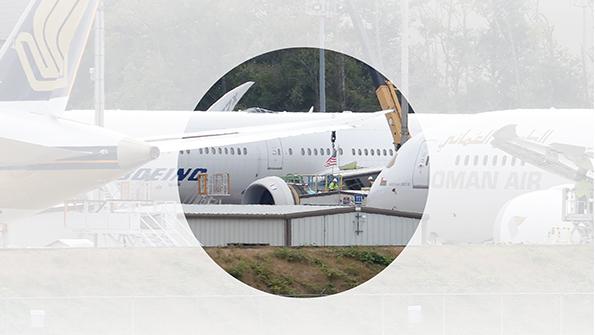Widespread Engine Attachment Fitting Cracks Halt 777-9 Flying

Boeing has inspected and apparently removed the thrust links on WH004, a member of the test fleet that last flew in November 2021.
Credit: Matt Cawby
Widespread Engine Attachment Fitting Cracks Halt 777-9 Flying is part of our Aviation Week & Space Technology - Inside MRO and AWIN subscriptions.
Subscribe now to read this content, plus receive full coverage of what's next in technology from the experts trusted by the commercial aircraft MRO community.
Already a subscriber to AWST or an AWIN customer? Log in with your existing email and password.






